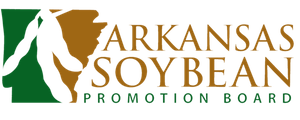Current Recipients
The Arkansas Soybean Promotion Board started the Fellowship Program in an agreement with the UA Division of Agriculture (UADA) Vice President’s office in 2011. The fellowship provide $3000 per month for the doctoral degree program and $1500 per month for the master’s degree program. Students were chosen for their academic accomplishments and career plans to advance the soybean industry in Arkansas.
Click on the names below to read about the research that each recipient is participating in.
2014 Recipients

University of Arkansas:
- Christopher Meyer – M.S.
- Terea Stetina – Ph.D.
- Christopher (Ryan) Norman – M.S.
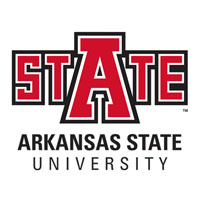
Arkansas State University:
- Justin Chlapecka – M.S.
2013 Recipients

University of Arkansas:
- David Moseley – Ph.D.
- Matthew Fryer – M.S.
- Ben Thrash – M.S.

Arkansas State University:
- Tyler Meadors – M.S.
2012 Recipients

University of Arkansas:
- Kimberly Cochran – Ph.D.
- Sharon Faye Smith – M.S.
Christopher Meyer:
The primary focus of Christopher’s M.S. research is the use of application technology to improve the efficacy of dicamba-containing spray mixtures while minimizing off-target movement. He is conducting three trials examining the effects of various spray application parameters, such as nozzle selection, application speed, and spray volume, on efficacy of various herbicide solutions.
Figure 1 shows some of the equipment used to make those applications.
Another component of these trials involved analyzing the spray droplet spectra of the various spray nozzle and tank-mixture combinations used in the field trials. To do this, Christopher traveled to the University of Nebraska-Lincoln Extension Center in North Platte and worked with Dr. Greg Kruger to analyze droplet spectra in his low-speed wind tunnel.
Figure 2 shows Christopher standing next to the wind tunnel. The laser measuring the droplet size is just above his waist and the nozzle being measured is in the center of the picture.
Christopher is also working on trials in collaboration with the United Soybean Board (USB) to better understand Palmer amaranth biology and develop practical solutions for managing herbicide resistance. He is currently managing seven research trials as part of his thesis, with four of them funded by the United Soybean Board (USB). Two trials are examining pre-emergence and post-emergence herbicide programs that will be used in next generation herbicide-resistant soybean varieties.
Terea Stetina:
The overall goal of Terea’s PhD research is to contribute to the understanding of Rhizoctonia solani (R. solani) epidemiology in Arkansas. Mycoviruses have been associated with changes in fungal pathogenicity. Terea compares mycovirus elements found in R. solani AG1-1A isolates with strains from different anastomosis groups (AG) using next generation sequencing.
Figure 1. shows Terea surveying a soybean
field near Monticello, Arkansas.
She experiments with different ways to cure isolates so that she can conduct seedling experiments to compare pathogenicity of R. solani with and without mycoviruses. She is also conducting laboratory experiments to study transmission of mycoviruses between fungal groups.
Figure 2 shows Terea grinding fungal tissue
Christopher (Ryan) Norman:
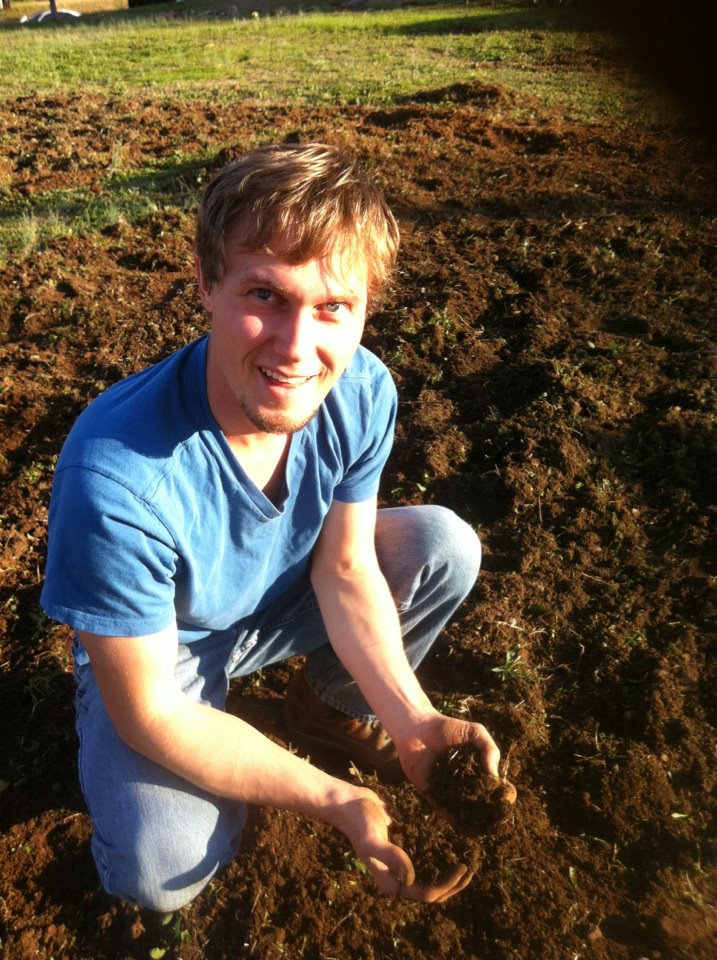
The primary focus of Christopher’s M.S. research is to clarify the relationship between various residue management practices and carbon emissions from agricultural soils in a wheat-soybean, double-crop study.
The experimental area consists of 48, 3×6-m plots with six replications for every tillage-burning-residue level combination and three replications for every tillage-irrigation-burning-residue level combination.
The results of this study will, hopefully, help clarify the relationship between various residue management practices and carbon emissions from agriculture soils.
The primary focus of Justin’s M.S. research is to gain an understanding of correct irrigation timing decisions using evapotranspiration (ET) as well as soil moisture sensors.
Figure 1 shows Justin setting up an ET gauge.
He is conducting a replicated experiment on two soybean fields in Mississippi County, one on a sandy soil and one on a heavy clay soil. The fields are furrow irrigated and plots are irrigated at different times based on ET and soil moisture sensor data.Weather stations were installed near both field locations to obtain accurate weather data. Also, ET gauges were installed at the edge of the fields and watermark soil moisture sensors were installed in each treatment to detect irrigation events.
If water use is limited, it is important to know which irrigation timings enhance yield and which could possibly be foregone with little to no penalty. Water use restrictions are already in place in neighboring states and it is inevitable that they will make their way into Arkansas before too long.
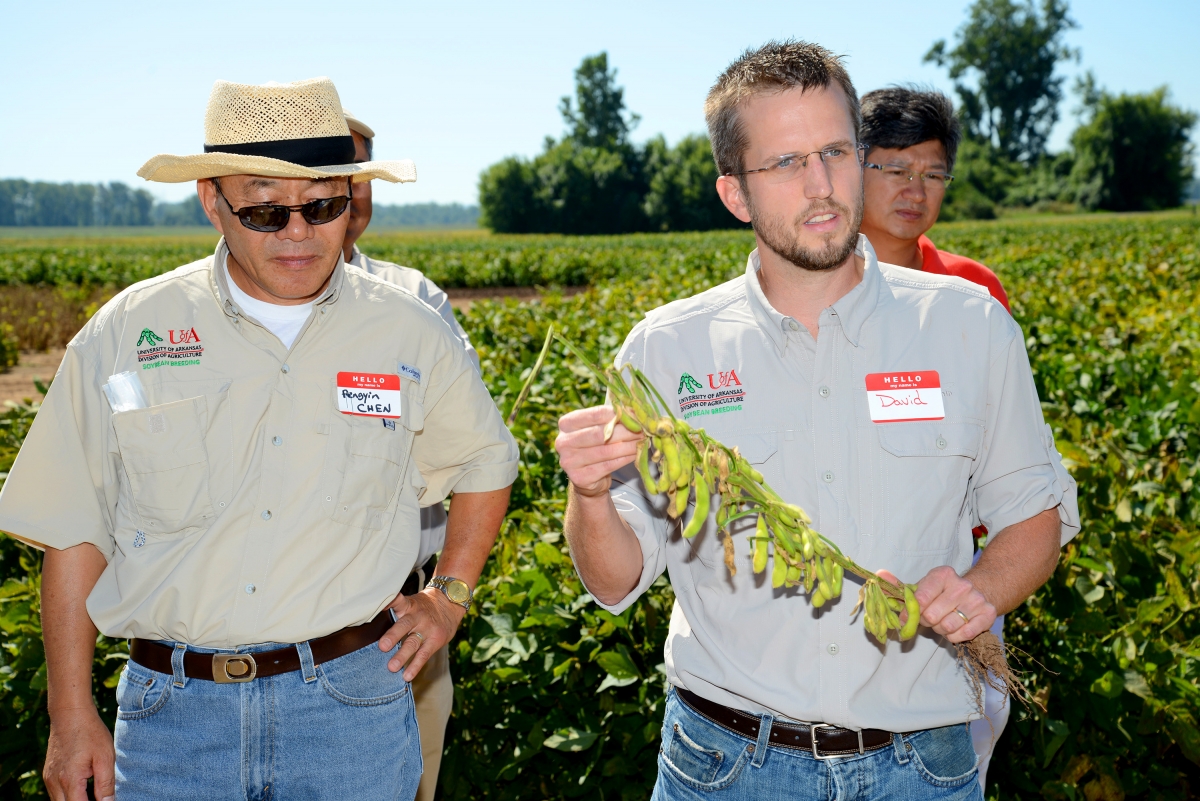 The primary focus of David’s Ph.D. research is to evaluate breeding, agronomic and processing methodologies of vegetable soybean (edamame) to increase domestic production for the U.S. market.
The primary focus of David’s Ph.D. research is to evaluate breeding, agronomic and processing methodologies of vegetable soybean (edamame) to increase domestic production for the U.S. market.
David is conducting a planting date by harvest date experiment using three commercially used edamame varieties to see how many days the variety can be harvested without loosing quality. He will look at the difference in quantity and quality between three planting dates.
Figure 1 shows David speaking at an edamame field day at the Vegetable Research Station in Kibler.
He will also use association mapping to determine the diverstiy in 395 edamame germplasm. The results of this experiment will assist in breeding for new lines.
Finally, David will work to expand the edamame market by identifying a canning method to preserve edamame at room temperature while maintaining acceptable sensory qualities.
The edamame market is growing in America and with the new edamame company in Mulberry, the market looks good for Arkansas. Further research, such as David’s, will help the company and Arkansas farmers.
Figure 2 shows David processing and taking data on edamame beans.
The objective of Matthew Fryer’s M.S. research is to validate the accuracy of existing soil-test based phosphorus and potassium fertilizer recommendations for soybean.
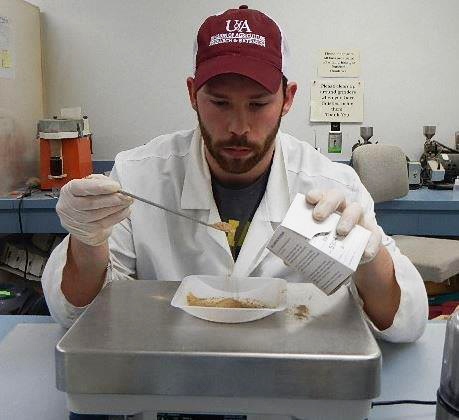
Field trials were implemented to measure the effects of varying rates of phosphorus and potassium fertilizers on the nutritional status of the plants as well as grain yield response as dictated by current university fertilizer recommendations based on preplant soil-test results.
Specifically, the trials seek to establish whether current soil-test P and K interpretations accurately identify soils that respond to P and K fertilization and, where positive responses to P and K fertilization occur, if the P and K fertilizer rates maximize crop yield.
Assessing variables that influence soil-test accuracy like spatial and temporal variability in soil-test results are also a component of this project. Vertical and horizontal spatial variability was assessed by taking soil samples at depths ranging from the 0-4 inches and 0-12 (Clayey soils) or 0-18 (silty soils) inch depths in each field trial area.
Temporal variability was examined by taking soil samples from specified plots bi-weekly from mid-October until mid-March.
Ben Thrash:
The primary focus of Ben’s M.S. research is to determine a green stink bug damage-density relationship for edamame.
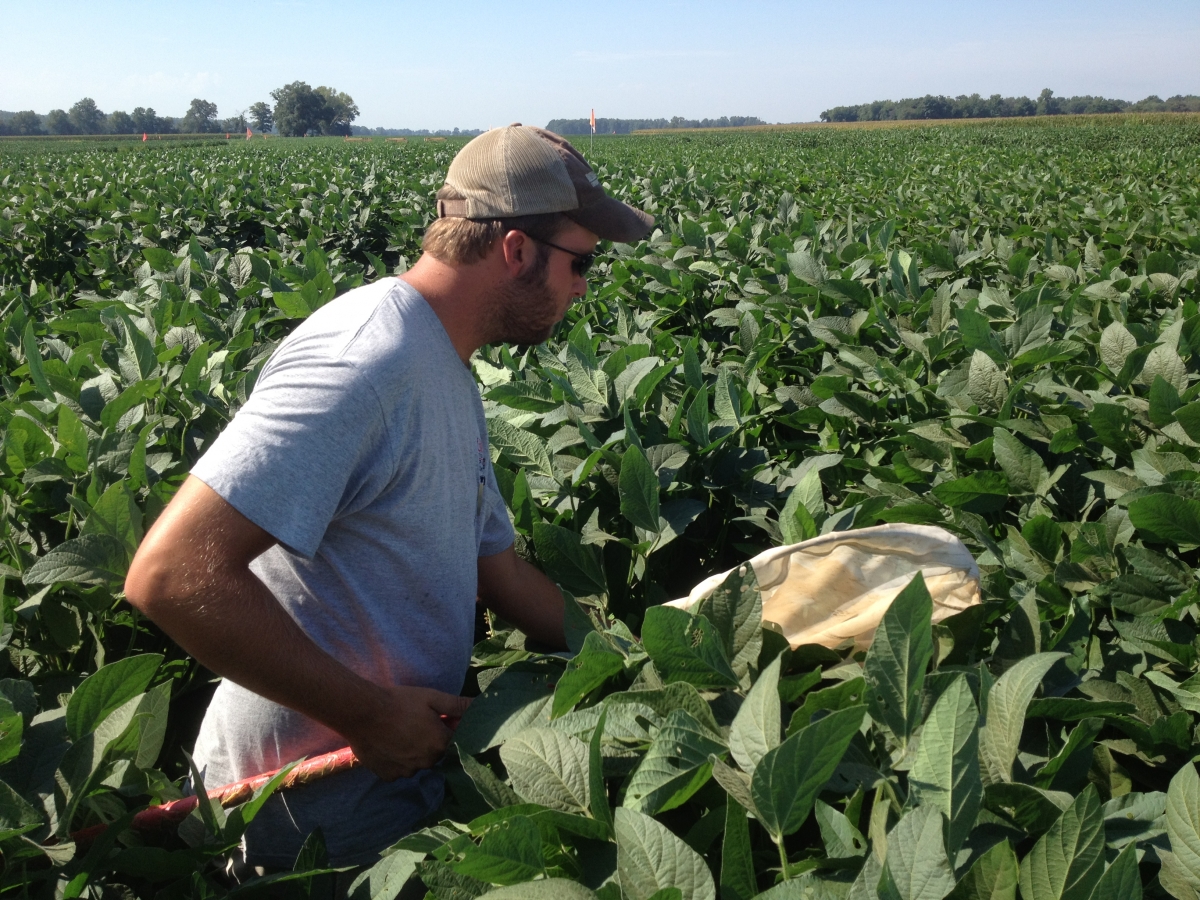 Ben used cages to confine green stink bugs on field-planted edamame at densities of 0, 2, 6 or 12 green stink bugs per cage for 7 days. No differences were found among stink bug densities in terms of damaged pods, average pod weight or yield.
Ben used cages to confine green stink bugs on field-planted edamame at densities of 0, 2, 6 or 12 green stink bugs per cage for 7 days. No differences were found among stink bug densities in terms of damaged pods, average pod weight or yield.
Ben also evaluated insect abundance in edamame compared to conventional soybeans. He sampled insects by sweep netting and clipping plants in both conventional soybeans and edamame.
Of all insects sampled, only bean leaf beetle, grape colaspis and threecornered alfalfa hoppers occurred at numbers great enough to be analyzed. No differences were detected in numbers of these three insects’ densities between conventional soybean and edamame.
Although the data collected from these studies were not enough to determine an economic threshold for green stink bug on edamame or to know which species contribute the most to feeding guilds, the studies provided insight on how future tests should be designed to establish economic thresholds on edamame.
The primary focus of Tyler’s M.S. research is to determine the agronomic and economic viability of an alternative double-cropping system consisting of energy beets and soybeans compared to that of a winter wheat/soybean production system.
Figure 1 shows Tyler during a beet harvest.

There are three treatments of the energy beet/soybean production system with a different energy beet harvest date for each that entails a subsequent soybean planting with each harvest treatment. The beets are analyzed for winter mortality and sugar content of the root at harvest, yield data is collected for both the energy beets and soybeans.
Both a winter wheat/soybean double-crop production treatment and a full-season soybean treatment are also grown, allowing a crop production budget to be established for all five trials to determine economic viability of the alternative production system as well as providing information to make comparisons of the agronomic impact of energy beets on soybean productivity.
Though this past winter was really harsh and all beets were winter killed, previous years of growing beets in the winter have been successful. The flexibility of harvest timing is a positive aspect of winter energy beets. As crop prices fluctuate, having alternative crop options will be very useful.
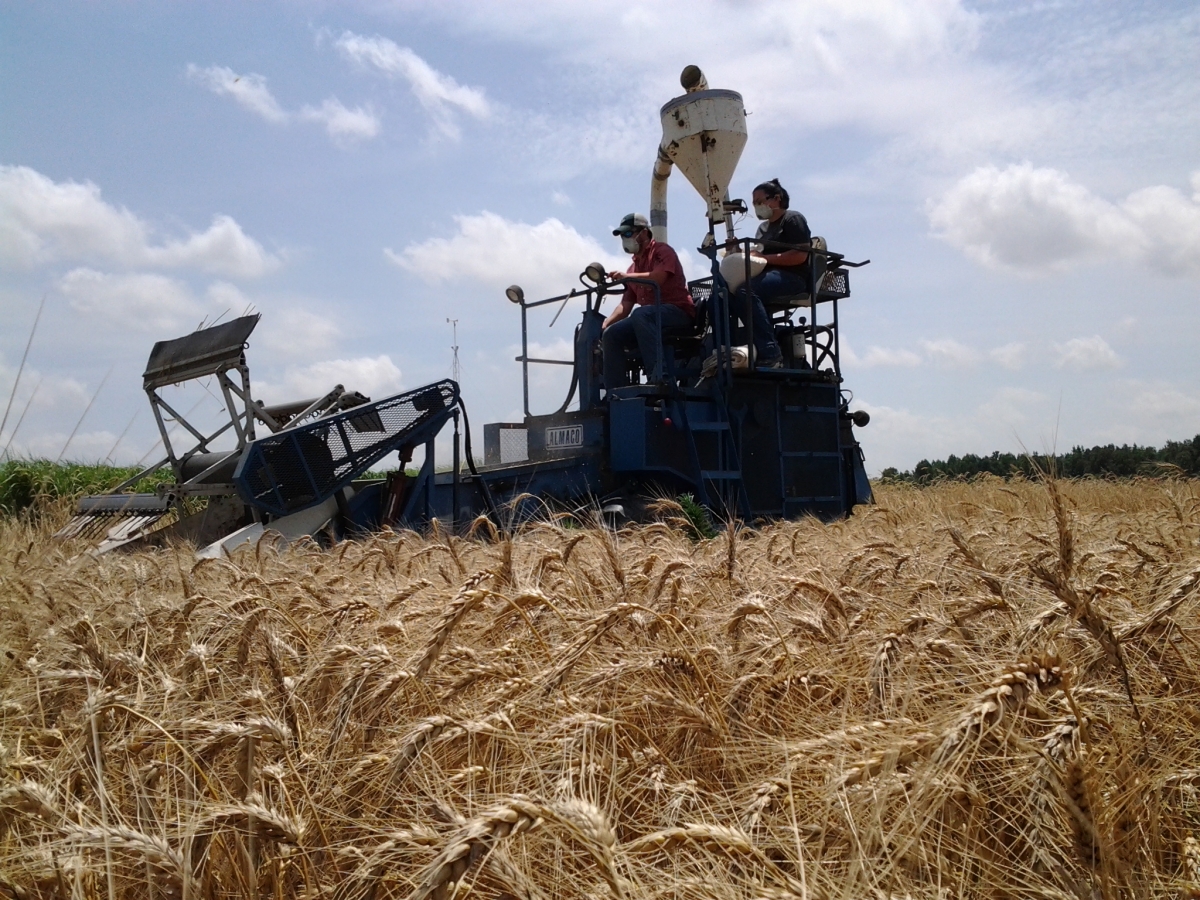 Tyler is also working on a project through his fellowship to determine why a yield lag exists for soybeans grown on the west side of Crowley’s Ridge in continuous rice/soybean rotation.
Tyler is also working on a project through his fellowship to determine why a yield lag exists for soybeans grown on the west side of Crowley’s Ridge in continuous rice/soybean rotation.
In this trial, 25 total fields will be soil sampled on the east and west side of Crowley’s Ridge and have biological as well as chemical analysis done to determine what soil factors might be driving this yield difference.
